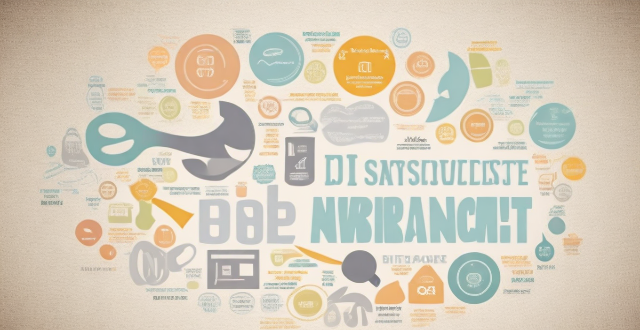The text discusses how technology has positively impacted accessibility and participation in sports for people with disabilities. It covers the development of assistive devices like wheelchairs and prosthetics, sensory aids such as audio description services and tactile signage, communication aids including sign language interpreters and assistive listening systems, and digital platforms that provide live streaming and social media interaction. The article also explores training tools like virtual reality and wearable technology, as well as accessibility features in sports venues. Overall, the text emphasizes how technology is breaking down barriers and promoting equality in sports for individuals with disabilities.

Technology's Impact on Accessibility and Participation in Sports for People with Disabilities
Technology has revolutionized the way people with disabilities engage with sports, making it more accessible and inclusive. From assistive devices to digital platforms, technology has played a pivotal role in enhancing the sporting experience for individuals with various impairments. Let's delve into some key ways technology has improved accessibility and participation in sports for people with disabilities:
Assistive Devices and Equipment
Wheelchairs and Prosthetics
- Wheelchairs: Lightweight, high-performance wheelchairs have been designed specifically for sports like wheelchair basketball, rugby, and tennis. These chairs are equipped with features that enhance speed, agility, and stability on the field.
- Prosthetics: Advanced prosthetic limbs, such as running blades and special footwear, enable athletes with lower limb amputations to participate in track and field events, marathons, and other races.
Sensory Aids
- Audio Description: For visually impaired fans and athletes, audio description services provide real-time narration of sports events, allowing them to follow the action and understand what is happening on the field or court.
- Tactile Signage: Braille signage and tactile maps help visually impaired individuals navigate sports venues independently.
Communication Aids
- Sign Language Interpreters: Live sign language interpretation at sporting events ensures that deaf or hard-of-hearing fans can stay informed about the game.
- Assistive Listening Systems: These systems provide a personal audio stream directly to the user's hearing aid or cochlear implant, improving sound clarity for those with hearing impairments.
Digital Platforms and Media
Live Streaming and Video Replays
- Live Streaming: Online platforms offer live streaming of sports events, making it possible for people with disabilities to watch their favorite sports from anywhere in the world.
- Video Replays: Instant replays and slow-motion footage help visually impaired fans understand the nuances of a game by providing additional visual cues.
Social Media and Online Communities
- Social Media: Platforms like Twitter, Facebook, and Instagram allow fans with disabilities to connect with other fans, share their experiences, and discuss sports-related topics.
- Online Communities: Forums and discussion boards dedicated to specific sports or disability groups provide a space for people to exchange information, advice, and support.
Training and Coaching Tools
Virtual Reality and Augmented Reality
- VR/AR Training: Virtual reality (VR) and augmented reality (AR) technologies offer immersive training environments where athletes can practice skills without physical limitations.
- Simulated Environments: VR allows Paralympic athletes to train in simulated environments that replicate competition venues, helping them prepare mentally and physically for upcoming events.
Wearable Technology
- Activity Trackers: Wearable devices monitor an athlete's performance metrics, such as heart rate, steps taken, and calories burned, during training sessions.
- Smart Clothing: Garments embedded with sensors can detect muscle activity and provide feedback on form and technique.
Accessibility Features in Sports Venues
Mobility Access
- Ramps and Elevators: Sports venues increasingly feature ramps, elevators, and other forms of accessible infrastructure to ensure that people using wheelchairs or mobility aids can easily move around the facility.
- Accessible Seating: Special seating areas designed for wheelchair users offer unobstructed views of the playing field or court.
Sensory Access
- Indoor Wayfinding Systems: Using beacons or Wi-Fi-based positioning, these systems guide visually impaired patrons through sports venues via a smartphone app.
- Vibration Alerts: Some stadiums have installed seats that vibrate when there's a score or significant event, helping deaf or hard-of-hearing fans stay engaged in the game.
Conclusion
Technology has undoubtedly opened up new avenues for people with disabilities to engage with sports as both participants and spectators. From cutting-edge equipment tailored to specific needs to digital platforms fostering inclusion, technology continues to break down barriers and promote equality in the realm of sports. As we look forward, we can expect even more innovative solutions that will further enhance accessibility and participation for all individuals, regardless of their abilities.